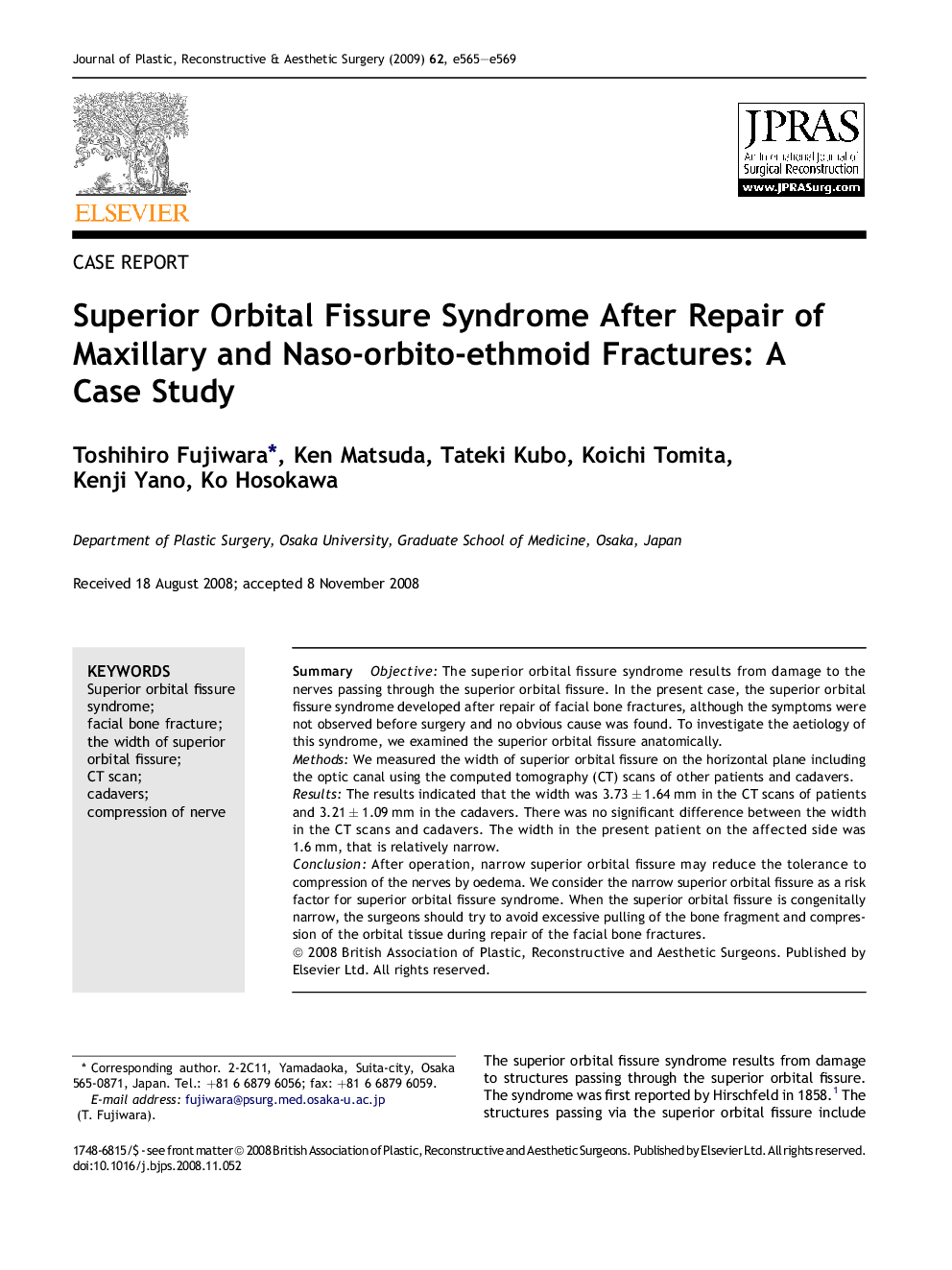| Article ID | Journal | Published Year | Pages | File Type |
|---|---|---|---|---|
| 4120004 | Journal of Plastic, Reconstructive & Aesthetic Surgery | 2009 | 5 Pages |
SummaryObjectiveThe superior orbital fissure syndrome results from damage to the nerves passing through the superior orbital fissure. In the present case, the superior orbital fissure syndrome developed after repair of facial bone fractures, although the symptoms were not observed before surgery and no obvious cause was found. To investigate the aetiology of this syndrome, we examined the superior orbital fissure anatomically.MethodsWe measured the width of superior orbital fissure on the horizontal plane including the optic canal using the computed tomography (CT) scans of other patients and cadavers.ResultsThe results indicated that the width was 3.73 ± 1.64 mm in the CT scans of patients and 3.21 ± 1.09 mm in the cadavers. There was no significant difference between the width in the CT scans and cadavers. The width in the present patient on the affected side was 1.6 mm, that is relatively narrow.ConclusionAfter operation, narrow superior orbital fissure may reduce the tolerance to compression of the nerves by oedema. We consider the narrow superior orbital fissure as a risk factor for superior orbital fissure syndrome. When the superior orbital fissure is congenitally narrow, the surgeons should try to avoid excessive pulling of the bone fragment and compression of the orbital tissue during repair of the facial bone fractures.
